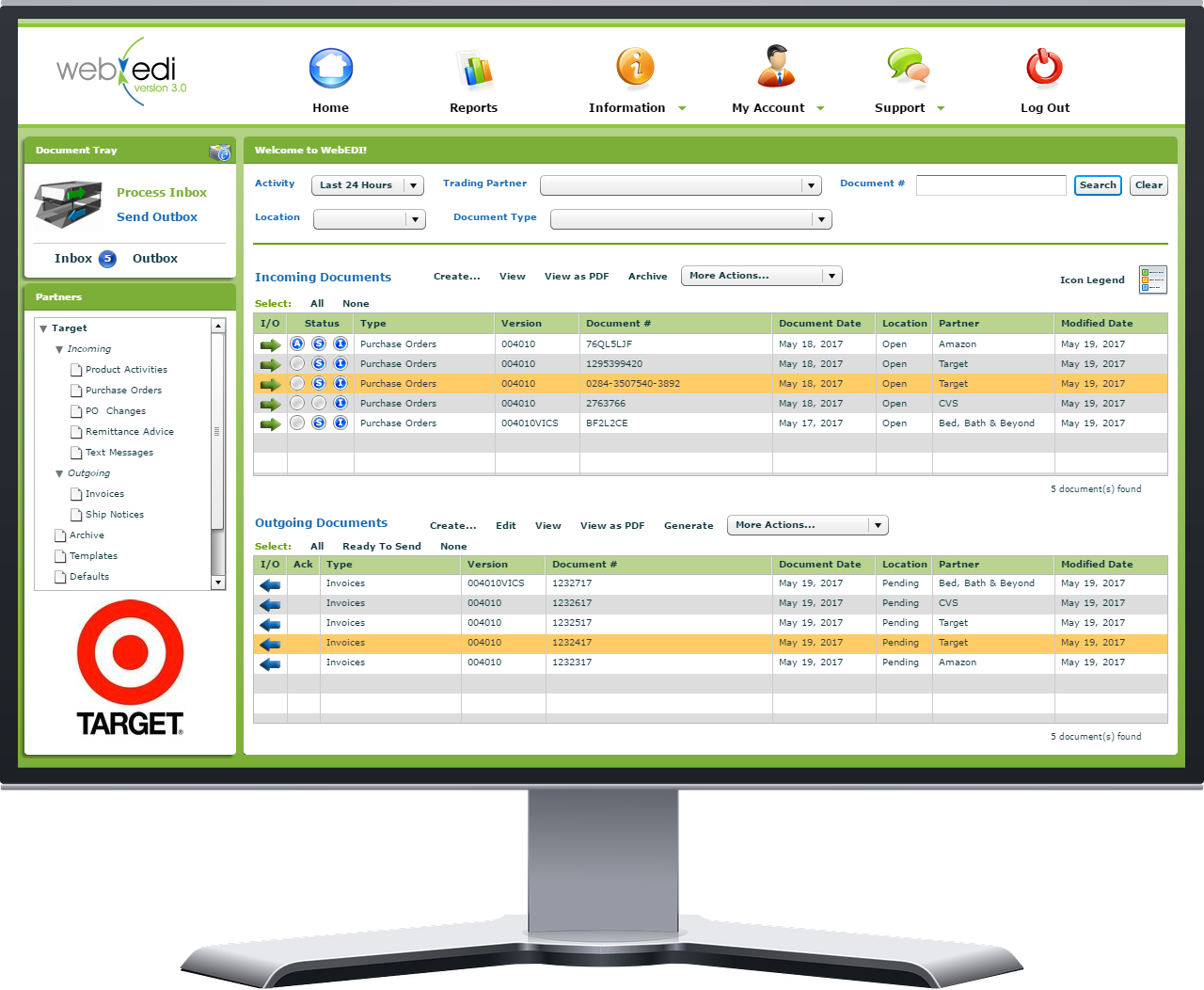WEB EDI DEMONSTRATION
Learn about the basic operation of WebEDI and how to transact with EDI customers.
INTRODUCTION TO WEB EDI
Electronic Data Interchange (EDI) is a way of exchanging business documents electronically. To enable the exchange, businesses form trading partner relationships and agree on the documents to exchange, how they will be exchanged, and what standard and structure will be used. Businesses usually utilize IT staff to perform these activities and maintain systems internally. A more cost-effective method is to use an EDI service provider and solutions like WebEDI. WebEDI simplifies EDI trading relationships and allows users to focus on higher-level business activities instead of EDI technology. With WebEDI, all of the trading partner EDI specifications, as well as system and technical issues, are maintained and managed by Edict Systems.
HOW WEB EDI WORKS
This video (no audio) illustrates the basic operation of WebEDI including receiving an EDI Purchase Order (EDI 850) and sending an EDI Invoice (EDI 810) from the WebEDI browser interface.
WEB EDI OVERVIEW
WebEDI is accessed from a web browser. It receives EDI transactions from multiple trading partners, converts them to readable reports, and stores them in an Inbox for users to acknowledge and review. When the Inbox is processed, users can then create documents to send back to their trading partners based on the documents they have already received. When an outgoing document is complete, users release it to the Outbox and send it to their trading partner. WebEDI converts the document to the trading partner’s EDI specification. Throughout receipt, processing, and return, the document details are maintained and archived for retrieval if needed.
As documents are processed with WebEDI, a corresponding icon is displayed, providing information such as document status and overdue communications.
INVOICE DEMONSTRATION
Four new Purchase Orders (PO) (EDI 850) have been received and are ready to process. The Inbox is processed, which automatically sends a Functional Acknowledgment (EDI 997) informing the customer the PO has been received. In this video, a PO is viewed and corresponding Invoice (EDI 810) created, viewed, generated, and sent.
PURCHASE ORDER ACKNOWLEDGMENT DEMONSTRATION
Some customers require a Purchase Order Acknowledgment (EDI 855), which provides information about your ability to fulfill the order. In this video, a Purchase Order (EDI 850) is viewed and corresponding Purchase Order Acknowledgment created, viewed, generated, and sent.
SHIP NOTICE DEMONSTRATION
Customers can require Ship Notices (EDI 856), which provide detailed delivery information. In this video, a PO is selected and corresponding Ship Notice created. Containers are manually packed (Auto Pack feature may also be used) and Ship Notice viewed, generated, and sent. Upon Ship Notice creation, packing labels can then be printed.
EXPORT A PURCHASE ORDER TO QUICKBOOKS AND IMPORT A QUICKBOOKS INVOICE
In this video (no audio), a WebEDI PO is exported to QuickBooks. Within QuickBooks, the PO appears as a Sales Order. When an invoice is created from the QuickBooks Sales Order, it is automatically queued for importing into WebEDI. After importing, the invoice is ready to send to a customer via EDI.
CREATE AN INVOICE IN WEB EDI AND EXPORT IT TO QUICKBOOKS
Another method of invoicing is to create the invoice within WebEDI and export it to QuickBooks. In this video (no audio), an invoice is created from a WebEDI PO and then exported to QuickBooks.

